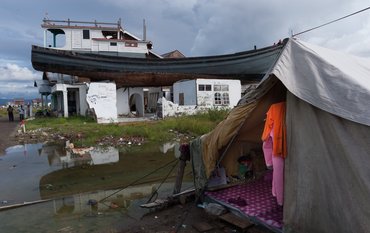With a two-day symposium in Istanbul, earthquake researchers are honoring four decades of Turkish-German collaboration. The symposium is focusing on the Marmara region in northwestern Türkiye, where the Mediterranean and Black Sea meet. This is also where the megapolis of Istanbul is located with its more then 17 million inhabitants. Researchers expect this megacity to experience a major earthquake anytime, because it lies on the North Anatolian Fault Zone (NAFZ). This fault system has repeatedly experienced devastating earthquakes with magnitudes above 7 and a strong earthquake on the segment near Istanbul is considered ‘overdue’. The worst earthquakes in the last century occurred in 1939 and 1999, with more than 30,000 (1939, Erzincan) and more than 17,000 (1999, Izmit) fatalities.
Exactly when such an earthquake will occur in or near Istanbul is uncertain. The goal of the research is to better understand the mechanisms that lead to sometimes violent ruptures and in other cases to weeks-long smaller earthquake series. Reliable identification of earthquake precursor phenomena would also help prepare for a severe earthquake.
The scientific director of GFZ, Susanne Buiter, said “it is a great honour and a strong recognition of the importance of our collaborative earthquake research that the Turkish Ministre of Interior Süleyman Soylu opened the Turkish-German Symposium on Seismotectonic Research in the Marmara Region.” The meeting was jointly organized by GFZ and the Turkish Disaster and Emergency Management Authority AFAD. In her opening address, Susanne Buiter said: “From the very first days of GFZ, 30 years ago, our researchers have been involved in exploring the plate boundary of the North Anatolian Fault Zone together with you.” She finished with an important goal: “While earthquake prediction remains a long-term goal in seismology requiring a long breath and continuing research efforts, we are very optimistic that with the current and planned monitoring infrastructure in the Marmara region we can contribute towards an improved hazard and risk assessment for the region, as well as towards developing the next-generation earthquake early-warning and forecasting systems, all with the ultimate goal to minimize the impact of a large earthquake in this region.”
For the programme: see here.













![[Translate to English:] [Translate to English:] Abror Gafurov von dem Schriftzug "Welcome to Azerbaijan" und den UN und COP Logos](/fileadmin/_processed_/2/5/csm_2024_11_Baku_COP29_Abror_Gafurov_1042faec82.jpeg)


![[Translate to English:] Martin Herold standing in front of the library on the Telegrafenberg](/fileadmin/_processed_/c/d/csm_Martin_Herold_d385ee4dd9.jpeg)
![[Translate to English:] Many people are listening to a presentation in the GFZ lecture hall.](/fileadmin/_processed_/c/a/csm_1_Bild1_hell_b9c0e9f5ed.jpeg)






![[Translate to English:] Both scientists sitting on stools in front of a wall of books in the Telegrafenberg library](/fileadmin/_processed_/6/6/csm_Buiter_Castell_DORA_4_e87cb1ea18.jpeg)
![[Translate to English:] Gruppenbild mit 4 Personen](/fileadmin/_processed_/8/d/csm_20241017_GFZ-Emmerman-Medal-005_web_reinhardtundsommer_21a414fa4a.jpeg)






![[Translate to English:] Ice landscape with five red tents](/fileadmin/_processed_/8/9/csm_Zeltlager_auf_dem_Eis_Urheberin_Jenine_McCutcheon_5ced2d523b.jpeg)

